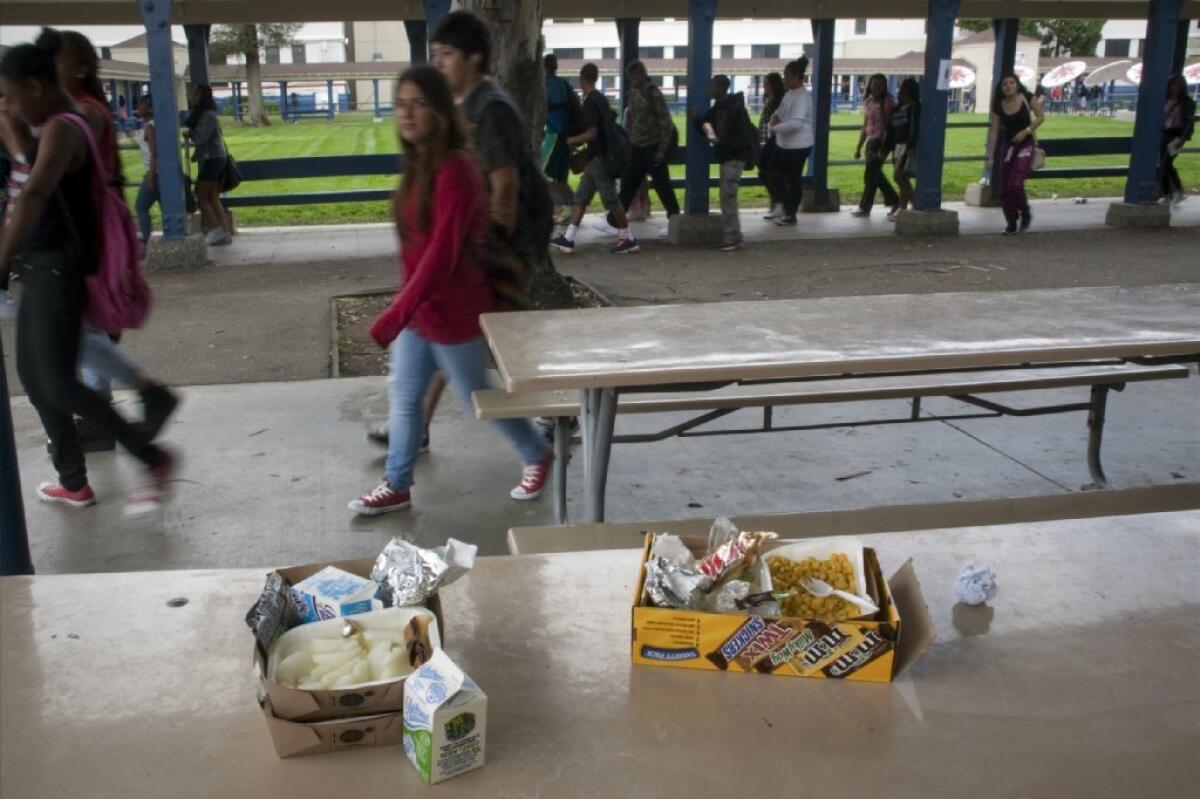Opinion: The shame, and the price tag, of wasting our food

- Share via
On Thursday you ate. On Friday you ate leftovers. Maybe on Saturday and Sunday too. By now you’re probably reaching into the fridge to throw out the detritus of your Thanksgiving binge.
After the national holiday comes the national profligacy – waste.
We Americans throw away 15% to 40% of our food – and it gets worse on gluttonous holidays.
You might just as well scrape $4 or $5 or $8 in cash right into the garbage every day, because that’s what food waste can cost a family. Or if you prefer this parallel, it’s like buying 10 gallons of gas, putting seven or eight gallons in your tank, and then yanking out the nozzle and letting the other two or three gallons just run all over the pavement.
Pope Francis has said that our grandparents used every morsel of leftovers, but abundance has made us profligate, and “throwing away food is like stealing: from the poor and hungry.”
Here, when we waste, we steal from ourselves. Kitchen by kitchen, restaurant by restaurant, grocery store by grocery store, all of this squandering adds up -- more than $165 billion simply tossed into the dumpster each year, according to the Natural Resources Defense Council.
When you grow up in farm country, as I did, and you see firsthand how much labor and sweat and fuel and water go into growing food and making it affordable, it’s excruciating to witness people piling up their plates, eating just a fraction of the food they’ve taken, and then watching them scrape whole meals’ worth of meat and vegetables and cheese and fish and fruit into the trash to be trucked off to some landfill. I’d rather people overate than threw food away; that way, at least it’s not getting wasted.
Our food standards have become like our celebrity requirements: If that apple isn’t perfect, if that tomato isn’t camera-ready, we won’t buy it. In fact, the apple or tomato may not even get to the market. Farmers themselves may just toss it because they know we won’t buy it unless it looks like it’s ready for a Martha Stewart cameo.
At every link in the food chain, tons are simply discarded. Each grocery store tosses away, by one estimate, something like $2,000 of food a day because the sell-by date is getting merely close. Those dates are way too cautious, some foodies argue, and grocery chains more concerned about liability than edibility.
We waste 50% more food than we did in the 1970s, a decade of high inflation and insane fuel prices. We complain about what we pay for gas, for housing and for movie tickets – yet, ignorantly or indifferently, we throw away big helpings of the sustenance that’s more important than any of those other things.
Make it a New Year’s resolution: Don’t waste food. Tape your pledge to your fridge – right over last year’s resolution about dieting. This is one that should be a lot easier to stick to.
Follow Patt Morrison on Twitter @pattmlatimes
More to Read
A cure for the common opinion
Get thought-provoking perspectives with our weekly newsletter.
You may occasionally receive promotional content from the Los Angeles Times.










